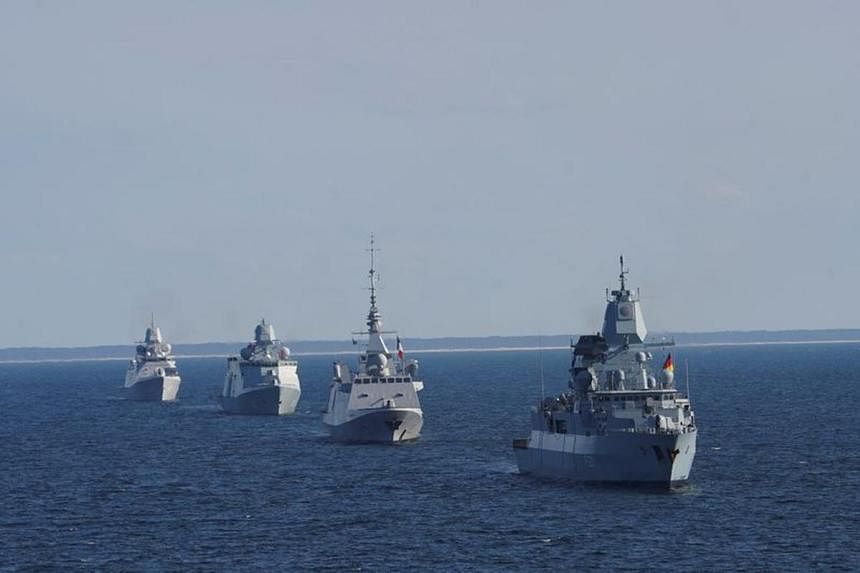ON BOARD THE USS MESA VERDE IN THE BALTIC SEA - Russia's war in Ukraine has injected a dose of grim realism into an annual NATO naval drill in the northern Baltic Sea as Western forces practice for the first time how to respond to any Russian strike on the region.
The two-week Northern Coasts exercise is unfolding in seas off Latvia and Estonia, NATO members that border Russia to the east and have felt more exposed to threats from their former Soviet master since Russian forces invaded Ukraine last year.
The drills kicked off on Sept. 9 and involve some 30 ships and over 3,000 personnel from all NATO countries in the Baltic region plus soon-to-be member Sweden and non-Baltic allies the U.S., Canada, the Netherlands, Belgium and France.
They are practicing amphibious operations and strikes from sea to land, and securing routes through the Baltic.
German Rear Admiral and Exercise Director Stephan Haisch said Russia's presence in the Baltic Sea, including frigates and an intelligence-collecting vessel, was normal and expected, but that this year's Northern Coasts drills had moved away from artificial scenarios towards reality.
The U.S. Navy's 200-metre (660-foot) Mesa Verde is taking part, designed to transport and land some 800 Marines in an amphibious assault.
"For many years we had a kind of artificial scenario. Right now, we are a bit closer to the realistic meaning, the geography and the partners and the opponent. So, this is more realistic than it was before," Haisch said aboard the Mesa Verde.
Captain Maris Polencs, Latvia's naval commander, said it had a need to develop future sea mining and de-mining capabilities in light of Russia's war in Ukraine.
"We're coming to see mines as an actual threat in the Baltic Sea if a similar conflict arises in this region," Polencs said.
It is the first exercise of this size that the German navy, the biggest Western navy in the Baltic, has commanded from its new maritime operations headquarters in Rostock, at the southwestern end of the Baltic.
Germany is prepared to provide the facility to NATO to oversee alliance operations in the Baltic in case of a conflict with Russia.
Finland joined NATO earlier this year and Sweden's entry bid is expected to be approved soon, both moves ditching generations of non-alignment in response to Russia's invasion of Ukraine.
This has radically altered the strategic posture along the Baltic Sea, where much of the coast had belonged to neutral states since Napoleonic times.
Now, apart from Russia's own small sections of Baltic coast, mainly the enclave of Kaliningrad sandwiched between Poland and Lithuania, the entire shoreline will soon be NATO territory.
Next year, NATO will hold its largest collective defence drills since the Cold War ended in 1990, with over 40,000 troops set to take part in the exercise Steadfast Defender in Germany, Poland and the three Baltic republics. REUTERS


